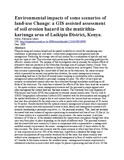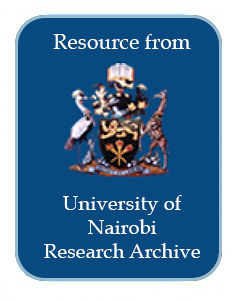Environmental impacts of some scenarios of land-use Change: a gis assisted assessment of soil erosion hazard in The Mutirithia-Kariunga area of Laikipia District, Kenya.
Characterizing soil erosion hazard and its spatial variability is critical for maintaining
user confidence in planning soil- and water- conservation programmes and general
land-use management. Predicting the average rates of soil erosion for a combination
of specific soil and land-use types is vital. This is because such predictions form a
basis for providing guidelines for effective erosion control.
The purpose of this investigation was to examine the erosion effects of alternative







